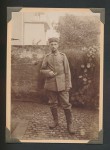 As his visit home for Thanksgiving two years ago was winding down, Dean Putney’s mother pulled out an old black photo album that he had never seen before. Inside were more than 700 pictures taken by his great-grandfather Walter Koessler when he was an officer in the German Reserve Artillery Battalion during World War I. Koessler was an architect and an accomplished photographer who was conscripted into the army while still in architecture school. He was sent to the Western Front where the army put his photographic skills to work, sending him up in biplanes and airships to take official aerial reconnaissance photos. However the vast majority of the pictures he took were informal shots of him and his comrades going about their daily life during all four years of the war: maneuvering cannons,
As his visit home for Thanksgiving two years ago was winding down, Dean Putney’s mother pulled out an old black photo album that he had never seen before. Inside were more than 700 pictures taken by his great-grandfather Walter Koessler when he was an officer in the German Reserve Artillery Battalion during World War I. Koessler was an architect and an accomplished photographer who was conscripted into the army while still in architecture school. He was sent to the Western Front where the army put his photographic skills to work, sending him up in biplanes and airships to take official aerial reconnaissance photos. However the vast majority of the pictures he took were informal shots of him and his comrades going about their daily life during all four years of the war: maneuvering cannons,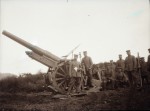 bathing, about to slaughter a cow, playing cards in the trenches and, as the early optimism of the war decayed into years of mass butchery and attrition, dying in the trenches.
bathing, about to slaughter a cow, playing cards in the trenches and, as the early optimism of the war decayed into years of mass butchery and attrition, dying in the trenches.
After the war, Walter emigrated to the United States. He settled in Los Angeles and worked as an art director for the movies. That’s where he put together the 100-page photo album recording his life from 1914 to 1918. He also kept a box of around 60 stereographs (two slightly offset pictures side-by-side that create the illusion of three dimensionality when viewed through a  stereoscope like a View-Master) of the war and pre-war period and hundreds of the original negatives of both the photographs and the stereographs.
stereoscope like a View-Master) of the war and pre-war period and hundreds of the original negatives of both the photographs and the stereographs.
Most published and widely circulated pictures from World War I were taken by the Allies. Not that there weren’t plenty of military photographers and journalists on the German side as well; it’s just a history is written by the victors phenomenon. So extensive a personal record of the entire war compiled by a single officer who also had the chops to take properly composed, even beautiful, photographs is a unique resource. On top of that, Walter’s family kept the entire collection in excellent condition, especially the negatives which were rarely exposed to air or light and are so sharp, so rich that they look almost like new.
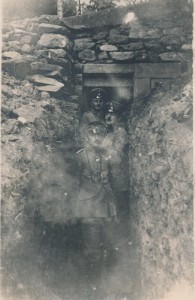
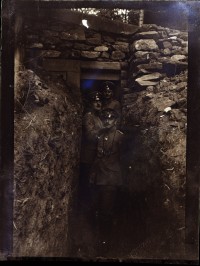
Dean Putney realized this precious record had to be shared with world. There were no captions on the pictures, just a few dates noted on the back of some, so Dean dedicated himself to research. He interviewed family, searched the web, contacted experts, even went in person to visit one of the sites depicted in the pictures so he could have an after shot to go with the devastated before.
 A few months ago, Dean started a Tumblr to post the pictures as he began to scan them. The Walter Koessler Project is a great browse, but Dean wanted to do even more. He wanted to publish a high quality book of the collection that was the same size as the photo album with space for his research notes and for that, he needed money.
A few months ago, Dean started a Tumblr to post the pictures as he began to scan them. The Walter Koessler Project is a great browse, but Dean wanted to do even more. He wanted to publish a high quality book of the collection that was the same size as the photo album with space for his research notes and for that, he needed money.
He turned to Kickstarter, starting a project with a goal of $50,000 dollars on August 6th which would allow him to make a minimum order of 1000 copies with a publisher that does the kind of large format, specialty work Dean wanted to pay the proper respects to his great-grandfather’s war experience. Within two days he had raised $18,000. By the time I read about it on Boing Boing and contributed on August 9th, the project was more than halfway to its goal.
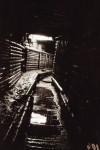 It has now exceeded that goal by $20,000 and there are still three weeks plus to go. Dean’s aim is to have the book in high resolution PDF form and in the casebound 11″ x 17″ coffee table format delivered in time for Christmas of this year. That’s contingent on everything going right, of course, and there could be unavoidable delays, but even if the coffee table book isn’t ready, some of the other rewards — PDF book, high resolution digital files of all the pictures, individual prints — will be.
It has now exceeded that goal by $20,000 and there are still three weeks plus to go. Dean’s aim is to have the book in high resolution PDF form and in the casebound 11″ x 17″ coffee table format delivered in time for Christmas of this year. That’s contingent on everything going right, of course, and there could be unavoidable delays, but even if the coffee table book isn’t ready, some of the other rewards — PDF book, high resolution digital files of all the pictures, individual prints — will be.
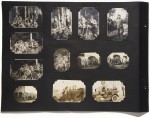 I don’t know what Dean plans to do with the extra money, but I hope it’s nothing more complicated than additional print orders because I’ve seen Kickstarters get weirdly rococo and fail to make good in response to an unexpected windfall. I think this is a phenomenal project, a history lover’s dream come true and a beautiful tribute. I also deeply appreciate Dean making the works freely available to bloggers and non-commercial media via a Creative Commons license as long as they are not used to promote war. Walter Koessler was a pacifist by the end of war. In this too Dean is paying homage to his great-grandfather and the horrors he experienced.
I don’t know what Dean plans to do with the extra money, but I hope it’s nothing more complicated than additional print orders because I’ve seen Kickstarters get weirdly rococo and fail to make good in response to an unexpected windfall. I think this is a phenomenal project, a history lover’s dream come true and a beautiful tribute. I also deeply appreciate Dean making the works freely available to bloggers and non-commercial media via a Creative Commons license as long as they are not used to promote war. Walter Koessler was a pacifist by the end of war. In this too Dean is paying homage to his great-grandfather and the horrors he experienced.
How do I place my order for the book?
You have to pledge at the $89 level or more. There were cheaper levels ($70 and $75) but they were early bird specials and were snapped up right away. It’s expensive, I know, but for that price you get the book, a large print of a photograph from the original negative, a PDF of the book and digital files of all the images in high resolution. If you know someone else who might be interested, you could go halfsies on a $150 pledge. That gets you two books plus the print and downloads.
I hope that since this has been such a huge success, Dean finds a way to may the book available from his website or something, but he hasn’t said anything about it so pledging to the Kickstarter project is the only way to get the book as of right now.
This is amazing! I’m in the middle of All Quiet on the Western Front now!
Oh wow, perfect timing! You can refer to the Tumblr whenever you feel the need for an illustration.
Small nitpick – In WWI, it was Allied (Entente) Powers and the Central Powers. Axis was WWII.
But this- this is extraordinary. I’ve three maybe half a dozen portraits photographs of two German great uncles, a captain of cavalry and lieutenant in the navy, but nothing at all like this.
An important nitpick, thank you. I’ve changed it to “German” which is more precise anyway. :thanks:
I imagine portraits are what most people have from this period because photography was still mainly left to professionals.
I am phenomenally jealous of Dean and so proud that he is sharing these images with others so another side of history can be seen. My envy is due to the fact that, in 1997 when my Grandmother died, I discovered a shoebox filled with negatives. They were photos my Grandfather had taken during his years as a conscript in the German army. Most of his time was spent working customs, and some as a radio operator – but in the end he was part of the doomed Army Central, most of whom never returned from Russia.
My brother has been scanning and researching the locations of the places in the negatives, much like Dean, but our mother, to whom the negatives truly belong, will not allow us to make any of the images public.
The avid follower of history in me cries that she does not understand what such images can mean to others. She sees it only as a family shame to be hidden. Had my Grandfather been part of a killing group, or the SS I might agree, but he was a simple banker and amateur photographer, caught up in a war that ended up killing him.
Dean’s publication makes me feel the hope that one day, perhaps my brother and I will be able to similarly share the only legacy we have of our grandfather.
I understand your mother’s perspective, although as a history-lover I don’t share it. I think talking about the war, about their own role in it or their parents’ roles, is still something of a taboo in Germany and in German-descended families. As long as you preserve the precious negatives and do all the research you can, for the time being you are keeping the memory alive for your generation and the ones that follow.
>smoking a giant pipe
>wearing a full beard
fucking hipsters!
Hi, how do I order it?
Thanks
Tom
You go to the Kickstarter page and click on the pledge level you want. All the tiers $75 and up will get you a copy of the book, plus lots of other stuff. The lower tiers include digital copies of the book and pictures. You only have 23 hours left to order!
I understand your mother’s perspective. The German people have been blamed for wars that were fought by governments. They were conscripted into the military…. they didn’t have a choice. Your mother has nothing to be ashamed of. My grandfather was an officer in the German military during WWI…. I know nothing about his service, where or what rank, but I hope to be able to research it and find out. I am not ashamed of his service. He did not have a choice.
After years of frustration with the declining interest students show for the typical history book (I have taught history at the college and high school levels in North America, Europe and Russia), I decided to try and remedy this situation by writing three books on German history using the pen name “Kurt E. Breitner”. My aim was to disseminate information to the non-specialist (student and non-) in a manner that was as easy, pleasant and digestible as possible.
I realize you are very busy, but if at all possible I would love your opinion of my work. You can get a general idea of how these history books differ by examining this link: http://hmsseries.wix.com/hmsseries
or by looking at the first few pages in their Amazon previews at http://www.amazon.com/s/ref=nb_sb_noss?url=search-alias%3Dstripbooks&field-keywords=kurt+breitner
If interested, I would be happy to send you one or more of these books as pdf files.
Sincerely Yours,
Evel Masten Economakis
(Ph.D. Columbia University, 1994)